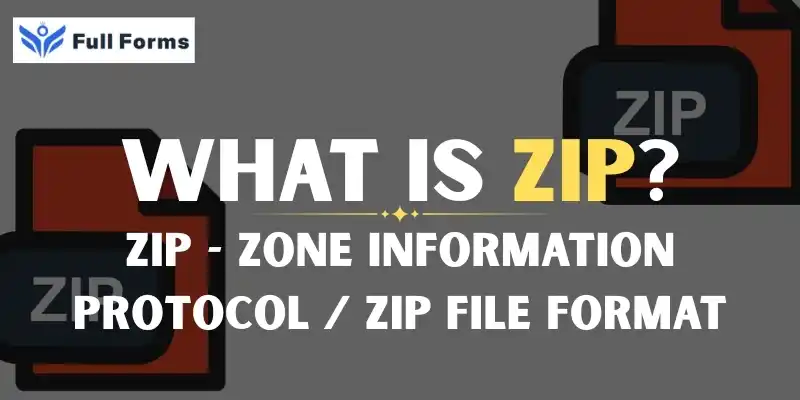Zone Information Protocol / ZIP File Format
(ZIP)

Description
Zone Information Protocol and ZIP File Format: A Comprehensive Overview
In the digital age, efficient data exchange and storage are essential. Two technological concepts that have played significant roles in this landscape are the Zone Information Protocol (ZIP) and the ZIP file format. While they share an acronym, they serve fundamentally different purposes: one facilitates network communications and resource sharing, while the other revolutionizes the way we compress and store files. Understanding both provides valuable insight into how digital information is managed, transferred, and preserved.
Zone Information Protocol (ZIP): Networking in the Apple Ecosystem
The Zone Information Protocol, often abbreviated as ZIP, was developed by Apple as part of the AppleTalk networking suite. In the 1980s and 1990s, as personal computers became more common in offices and schools, there was a growing need for computers to communicate, share resources, and work together efficiently. AppleTalk was Apple’s answer to this challenge, and ZIP was a key protocol within it.
At its core, the Zone Information Protocol was designed to help organize and manage networks by dividing them into logical “zones.” Each zone could represent a department, floor, or building, making it easier for users to find shared resources like printers and file servers. For example, in a university, the library, administration, and various academic departments could each be assigned their own zone. Users would then see only the devices relevant to their zone, reducing confusion and network congestion.
ZIP worked in tandem with other AppleTalk protocols. It maintained lists of available zones and resources, ensuring that devices could broadcast their presence to users in the same or related zones. This organization made the AppleTalk network scalable and user-friendly, which was particularly important as networks grew larger and more complex.
While AppleTalk and ZIP have largely been replaced by more modern networking protocols like TCP/IP, their legacy lives on. The concept of logical zones helped shape later approaches to network segmentation and resource discovery, both of which remain relevant in today’s IT environments.
ZIP File Format: Revolutionizing File Compression and Archiving
When most people hear “ZIP,” they think of the ZIP file format—a method for compressing and packaging files that has become a staple of digital life. Created by Phil Katz in 1989, the ZIP file format addressed two major needs: reducing file size to save storage and bandwidth, and bundling multiple files into a single archive for easy transfer.
ZIP files use data compression algorithms to shrink the size of files without losing information, a process known as “lossless compression.” This is crucial for preserving the integrity of documents, images, and programs. The ZIP format typically uses the DEFLATE algorithm, which analyzes patterns and redundancies in the data to achieve high compression ratios. For users, this means faster downloads, easier email attachments, and more efficient use of storage devices.
Another major benefit of ZIP files is their ability to contain multiple files and even entire folder structures within a single archive. This is especially useful for distributing software packages, backing up important data, or sharing collections of documents. Most operating systems today include built-in support for creating and extracting ZIP files, making the format universally accessible.
Beyond basic compression, the ZIP file format supports features like password protection, encryption, and file integrity checks. These capabilities add an extra layer of security and reliability, making ZIP a trusted choice for sensitive information and critical backups.
Comparing and Contrasting ZIP: Protocol vs. File Format
Despite sharing the same acronym, the Zone Information Protocol and ZIP file format address very different needs. ZIP as a protocol was about organizing and managing network resources, while ZIP as a file format is about compressing and archiving data. Both, however, represent responses to the growing complexity of digital environments—one dealing with the challenge of network navigation, the other with file management and storage.
Their development underscores a broader theme in technology: as systems become more interconnected and information-rich, new tools and standards emerge to help people make sense of and optimize these environments.
Lasting Impact and Modern Relevance
The Zone Information Protocol, while now largely obsolete, was instrumental in the early days of networked computing. Its approach to network segmentation and resource discovery set the stage for later innovations in network management. On the other hand, the ZIP file format remains as relevant as ever. From sharing photos with friends to distributing large software updates, ZIP files are a daily part of modern computing.
In summary, both ZIP as a protocol and as a file format have shaped the way we interact with digital information. They remind us that behind every familiar feature on our computers lies a history of creative problem-solving and technical evolution—paving the way for the seamless digital experiences we often take for granted today.
